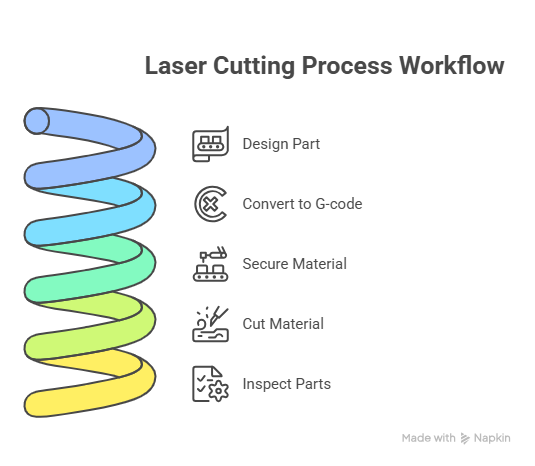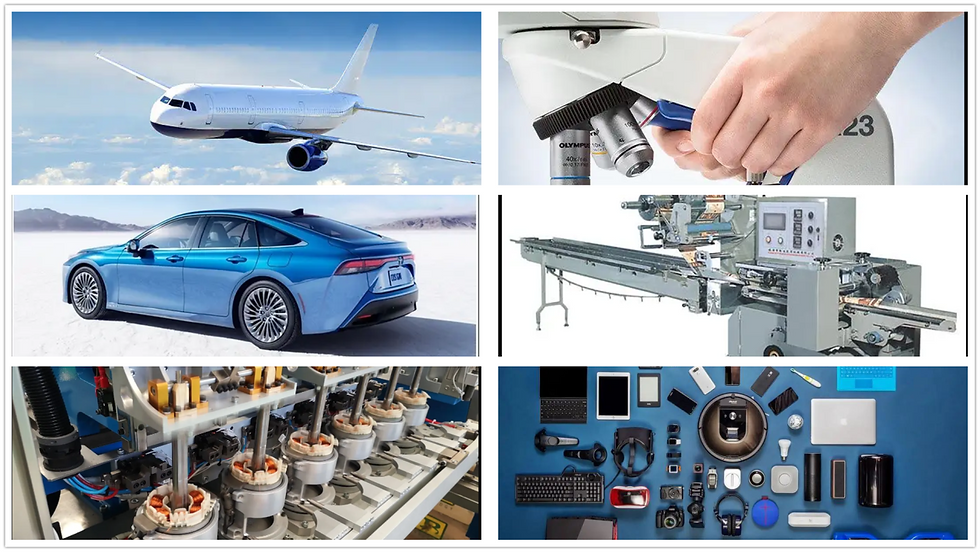Sheet Cutting: The Ultimate Guide to Precision Sheet Processing
- shiva ganesh
- Jul 29
- 4 min read
Table of Content
Introduction to Sheet Cutting

What is Sheet Cutting?
Sheet Cutting is a fundamental process within sheet metal fabrication and manufacturing, used to cut flat sheets of metal, plastic, or composite materials into specific shapes, sizes, and patterns. Sheet cutting serves as the starting point for further operations like bending, forming, or assembling.
Whether it's producing automotive panels, electronic enclosures, architectural elements, or industrial components, sheet cutting offers speed, precision, and repeatability.
A Brief History of Sheet Cutting Technology
Traditional sheet cutting methods like shearing and sawing evolved alongside industrialization. Modern CNC-controlled cutting technologies like laser cutting, plasma cutting, and waterjet cutting emerged in the late 20th century, allowing for complex geometries and high precision in both prototyping and mass production.
How Sheet Cutting Works

The Basic Workflow
Design the part or pattern in CAD software.
Convert design files into machine-readable code (G-code).
Secure the sheet on the machine bed.
Cut the material using the chosen cutting technology.
Inspect the cut parts for accuracy and quality.
Key Sheet Cutting Technologies

Laser Cutting
Uses a high-powered laser beam to melt, burn, or vaporize material with extreme precision.
Plasma Cutting
Utilizes a plasma torch to cut through electrically conductive materials like steel and aluminum.
Waterjet Cutting
Employs a high-pressure stream of water mixed with abrasive particles to cut virtually any material without heat.
Shearing
Mechanical cutting process using blades to make straight cuts in sheet materials.
Punching
Uses CNC turret punches to create holes and complex patterns by mechanically stamping the sheet.
Sheet Cutting Processes

Laser Cutting
High precision and speed
Suitable for thin to medium thickness metals and plastics
Ideal for complex shapes and fine details
Plasma Cutting
Fast and cost-effective for thicker metals
Common in fabrication shops and heavy industries
Waterjet Cutting
No heat-affected zone (HAZ)
Cuts metals, composites, ceramics, glass, and plastics
Shearing
Straight cuts only
High-speed production for simple geometries
Punching
Ideal for repetitive shapes, holes, and patterns
Fast and efficient for high-volume production
Materials Used in Sheet Cutting

Common Materials
Metals
Steel, stainless steel, aluminum, copper, brass, titanium.
Plastics
Acrylic, polycarbonate, PVC, ABS.
Composites
Carbon fiber, fiberglass.
Others
Foam, rubber, and specialized industrial laminates.
Applications of Sheet Cutting

Automotive
Chassis components, panels, brackets.
Aerospace
Precision parts, structural panels, interior components.
Electronics
Enclosures, faceplates, heat sinks.
Architecture
Decorative panels, cladding, structural components.
Industrial Equipment
Machine guards, conveyors, control panels.
Signage
Letters, logos, intricate patterns.
Advantages of Sheet Cutting

Precision and Repeatability
CNC-controlled processes ensure high accuracy and consistency.
Flexibility
Suitable for prototypes through mass production.
Wide Material Range
Cuts metals, plastics, composites, and more.
Complex Geometries
Capable of producing intricate shapes and internal features.
Speed
Modern cutting machines enable fast turnaround times.
Limitations of Sheet Cutting
Thickness Limits
Some processes (laser, punching) are limited by material thickness.
Edge Quality
Plasma and mechanical methods may require secondary finishing.
Heat Effects
Laser and plasma cutting may create heat-affected zones in some materials.
Initial Setup Costs
Machines and tooling can represent a significant investment.
Sheet Cutting vs. Other Fabrication Processes
Key Differences
Feature | Sheet Cutting | CNC Machining | 3D Printing |
Material Form | Flat sheets | Solid blocks | Filament/powder |
Geometry | 2D or flat-based 3D | 3D complex parts | Fully 3D |
Volume | Low to high | Low to medium | Low to medium |
Speed | Fast (after setup) | Moderate | Slow per part |
Edge Finish | Varies by process | High | Moderate |
When to Choose Sheet Cutting
For flat, panel-like components.
When speed, volume, and material efficiency are priorities.
Ideal for simple to moderately complex profiles.
Future Trends in Sheet Cutting
Fiber Laser Technology
Improved speed, precision, and energy efficiency for cutting metals.
Automation and Integration
Fully automated systems combining cutting, sorting, and stacking.
AI and Smart Manufacturing
Adaptive software optimizing toolpaths, energy use, and nesting.
Hybrid Machines
Combining cutting, punching, and bending in a single machine.
Cost Considerations
Machine Cost
Laser cutters: ₹30 lakhs to ₹2 crores+
Plasma cutters: ₹10 lakhs to ₹50 lakhs
Waterjets: ₹50 lakhs to ₹3 crores
Shears & punches: ₹5 lakhs to ₹1 crore
Operational Costs
Energy consumption (especially for lasers and waterjets)
Consumables (nozzles, abrasives, gases)
Maintenance and skilled labor
Part Cost
Depends on material, thickness, complexity, and volume.
Choosing the Right Sheet Cutting Technology
Based on Material
Metals: Laser, plasma, waterjet.
Plastics/composites: Laser, waterjet.
Foams, rubbers: Waterjet or knife cutting.
Based on Application
Fine detail: Laser.
Thicker sections: Plasma or waterjet.
High-volume, repetitive: CNC punching.
Tips for Getting Started with Sheet Cutting
Material Knowledge
Understand the cutting behavior and properties of your materials.
Optimize Nesting
Efficient layout minimizes waste and cost.
Use the Right Technology
Match cutting method to material, thickness, and quality needs.
Work with Experts
Partner with established cutting service providers for best results.
Conclusion

Sheet Cutting remains a foundational process in modern manufacturing, enabling fast, precise, and flexible production of components across industries. Whether through laser, plasma, waterjet, or punching, this technology is essential for turning flat materials into finished products with accuracy and efficiency.




Comments